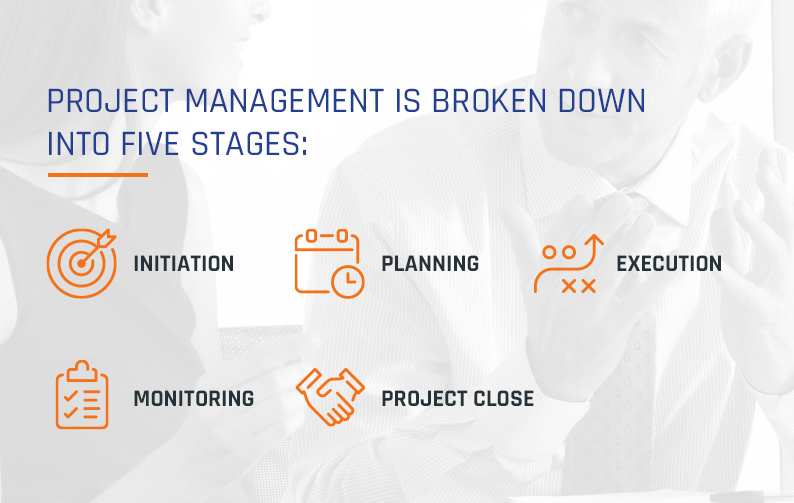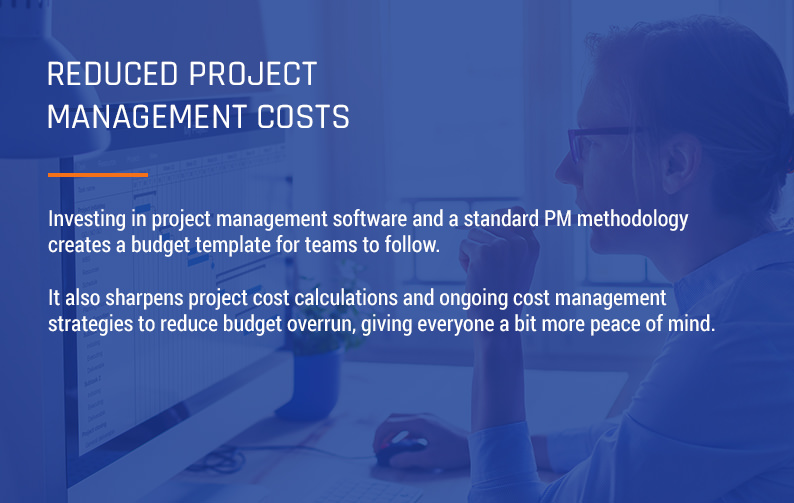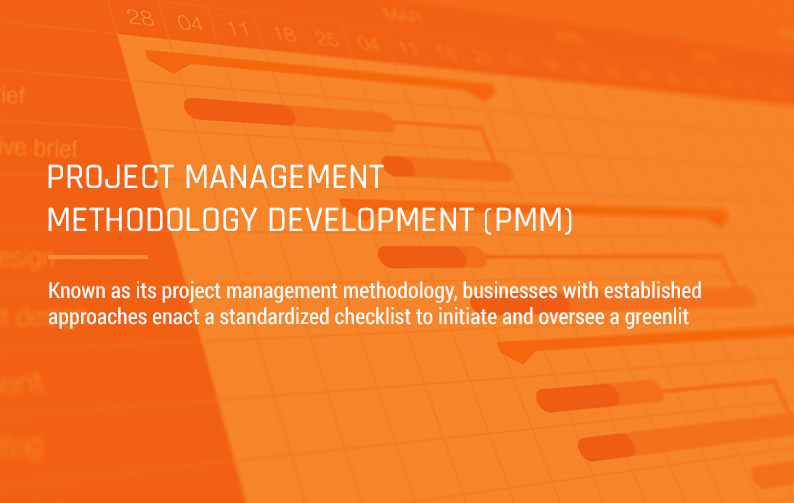13 Signs You Should Invest in Project Management

To invest or not to invest, that is the question — at least, for organizations satisfied with “business as usual” project management, even if that business as usual leaves a significant number of projects over-budget, behind schedule or fluxing in scope and deliverables.
Failed projects — particularly in the government and IT — cost organizations between $50 to $150 billion a year on average. In fact, over 41% of government IT projects are considered complete failures and are scrapped altogether.
Investing in project management tools is the way to make such waste a thing of the past, turning a new page for those in both the private and public sectors to execute more high-value projects.
What Is Project Management?
Project management (PM) refers to the complete set of tools and processes undertaken to guide a project from ideation all the way through to its execution.
It harmonizes an organization’s people, processes and technology to create a replicable, resource-maximizing approach that ultimately sees more projects reach full completion.
According to the Project Management Institute, the world’s leading research and professional organization for the project management industry, project management is broken down into five stages:
- Initiation: A project’s initial concept or idea, typically proposed to solve a pain point, close a gap or create a competitive advantage.
- Planning: Allocating resources — financial, human and technological — and defining project benchmarks to achieve an outlined success case.
- Execution: The implementation of a project’s plan across a scheduled timeline.
- Monitoring and Controlling: The ongoing evaluation of a project to ensure it remains on-time, on-budget, on-scope and risk-mitigating.
- Close: The completion point of a project, formally assessing its deliverables (i.e., scope) and determining process and practice tweaks for future endeavors.

Why You Should Invest in Project Management
There are numerous reasons to invest in better project management practices and technology for your enterprise, starting today. Here are 13 of them.
1. More Projects Done On-Time
Schedule estimation is a core piece of project initiation and planning, and it’s one of the earliest variables of project completion that participants outline.
Project management software, in particular, helps keep tasks aligned, workflows visible and stakeholders accountable. Fewer late deliverables and better project time management ensure a project’s original timeline stays intact and that all participants know what’s happening, when and by whom. If questions arise, the software acts as a communications repository, reducing silos and keeping schedules swimming along.
2. Reduced Project Management Costs
Mismanaged projects cost more. Changes in scope, extended timelines or poor communications can all force project managers to dedicate further resources — such as time, money and personnel — than initially anticipated. This offsets both a project’s ROI and delays its value-adding outputs.
In any situation, project participants grow frustrated, while upper management is less likely to sign off on departmental endeavors in the future.
Investing in project management software and a standard PM methodology creates a budget template for teams to follow. It also sharpens project cost calculations and ongoing cost management strategies to reduce budget overrun, giving everyone a bit more peace of mind.
3. Higher Return on Investment When Using Project Management Software, PMOs
While there isn’t a universal ROI calculation for all project management software and PMOs, recent data illustrates that deploying both saves medium and large-sized companies an average $567,000 per project while also completing 30% of projects under budget. Those are direct savings put back in your pocket — and snowballing greater and greater PM ROIs.
There are many project management ROI calculators. Organizations can generate ROIs using a number of models:
- Comparing the financial returns of project portfolios that didn’t use PM software and the financial returns of those that did use PM software.
- Creating “optimistic,” “standard” and “pessimistic” project cost projections for certain test case projects, then simulating or conducting them to determine how software influences these schedules, budgets or scope costs.
- Calculating the quantitative and qualitative influences of a PMO across a portfolio of projects, assigning cost measures to things like scheduling gains, communication gains, budget gains and developments in risk management.
4. Standardized Project Management Workflows
Adopting a standard project management methodology creates a replicable and functional workflow guiding you across your project’s complete cycles.
Think of it like a blueprint. Project management standards create a consistent scaffold for new ideas, plus they contain best practices to see more projects to fruition. They help projects in any department remain aligned with organizational values while following similar completion steps:
- Signal when tasks are done
- Pass tasks onto the next stakeholder
- Signal questions or confusion
- House and manage core project documents
- Review project parts, schedules, budgets and more
- Measure and track project benchmarks
5. Intuitive and Convenient Communications
Project management software serves as the communication hub for projects.
Project participants, stakeholders and executive decision-makers log into one place to ask questions, relay answers and conduct general process and tasks communications. PM software doubles as the central repository for project documents and data, giving project participants real-time, instant access to its information regardless of location.
Some software even allows for communication with external agents, such as third-party vendors or contractors, all within a secure piece of software.
6. Stronger Risk Mitigation
One of the biggest advantages of investing in project management is the impact it has on participant communication.
When teams are more connected, they can readily collaborate to identify and respond to project risks — both preemptive ones as well as those bound to organically crop up. Best practices can be applied from past risk-mitigation actions to reduce the likelihood of them reoccurring on future work.
Some PM software also includes data dashboards and reports, increasing visibility into scope-altering risks. Increased risk visibility means spotting a project’s hurdles or problems earlier and mitigating them before they become budget or morale wounds.
7. Enhanced Team Cohesion
Project management methodologies and software help clarify everyone’s roles and activities when working on an initiative. When everything is outlined clearly in PM method documents as well as mapped out across project stages in the software, a team member can quickly and conveniently review their responsibilities, check off tasks, move work onto approval stages, send communications and even access rework (if necessary), all from the same portal.
8. More Professional Development Opportunities
Investing in project management certifications is a great way to offer professional development opportunities for your employees. They reap the rewards of an enriched skillset and resume booster, while you benefit from the knowledge they apply back within their teams.
For organizations that value curiosity, initiative and lifelong learning in its employees, incentivizing project management certifications is especially attractive. Providing PM training and sponsoring certifications aligns what you say you value with what you actually promote. This goes a long way in establishing employee trust, commitment and loyalty.
9. Increased Quality Control
Project outputs experience greater quality assurance and control through set project management methodologies. This is because ad-hoc practices or in-the-moment decisions are gradually phased out, replaced by a step-by-step process to plan, initiate and implement a new project.
Regardless of what department or team launches a project, they follow the same guidelines. This makes it far easier for your organization’s leaders to conduct quality control audits, review project data and determine reasons for a project’s strengths and weaknesses. Decision-makers are then better equipped to increase project performance and outputs in the future, making consistent strides in quality planning, quality production assurance and even user quality acceptance after a project’s implementation.
10. More Strategic Resource Allocation
In a recent survey conducted by The Economist, over a third of executives cited their organization’s new project management tools as the driving factor in improved resource allocation.
Project management software and PMOs were particularly beneficial. Their data and guidance give stakeholders keener insights into project risks and process hurdles, allowing them to tweak benchmarks and create both qualitative and quantitative adjustments to project cycles. As a result, future projects see better resource allocation and utilization — and better outcomes.
11. Safer Centralized Data
Most project management software comes with customizable security tools to control access and protect project data. The more controls that are set up, the fewer instances of data mismanagement, security breaches and general IT negligence there tend to be.
Investing in this technology complements your organization’s general IT security best practices, including:
- Creating a single point of user access to view documents, reports, work tasks, budgets, schedules, participants and more
- Assigning user roles and login credentials with specific permissions in the software
- Monitoring usage via audit trail functions
- Backing up project data
- Serving as the single repository to share, exchange and edit all project materials.
12. Decreased Manual Processes, Workarounds
Workarounds refer to temporary, often spur-of-the-moment solutions to a problem caused when normal processes are interrupted or unavailable.
Workarounds are typically manual and unstructured. Prolonged workaround situations, such as ones during equipment failures or when key subject matter experts can’t be reached, can jeopardize typically redundant process and quality control, even risking things like ISO standards.
PM software and PMO offices step in to decrease ad-hoc manual interventions, reinstating appropriate schedules, task assignments, resource allocation and progress updates. In the case of PM software, these items are already automated, reducing the risk for manual workarounds from a project’s onset.
13. Harness Data-Backed Confidence
Investing in project management ultimately provides you with more visibility, more control and more insights into what makes a successful project tick. Leveraging the expertise of trained personnel as well as the data provided by the software, you can then make quantitatively informed decisions on truly successful project management strategies, backed by metrics and hard figures.
Those decisions boost confidence in your organization’s ability to execute its project portfolio, controlling spending while increasing results. Who doesn’t want to show that off to their boss?
Ways of Investing in Project Management
Organizations have more tools and techniques than ever at their disposal to experience the advantages of project management.
1. Project Management Software
Project management software comprises digital programs that allow organizations to plan, organize, communicate, manage and track a project across its outlined phases and deliverables within one portal. These pieces of software are specifically designed for task and resource visibility and are among the most prevalent software as a service (SaaS) tools used by businesses today.
Organizations typically purchase a usage license from the maker of the PM software. That license gives them subscription-based access to the digital platform, creating “on-demand” usage for all approved team members and stakeholders.
Popular project management software today includes:
- Microsoft Project
- Microsoft Planner
- Daptiv
- Smartsheet
- And many more
2. Project Management Hardware
Investing in project management software goes hand in hand with ensuring employees have remote access to those tools across the range of devices used in a typical workday.
Most often, this means project management-configured hardware such as laptops, tablets and even mobile phone with access to the project management software. Participants can quickly and securely log into the project management system over their mobile devices, then manage project workflows regardless of location.
Many organizations make PM software selections with these mobile device affordances, telecommunication collaboration and remote security features in mind.
3. Project Management Methodology Development
 Investing in project management also means fine-tuning the way your organization approaches projects.
Investing in project management also means fine-tuning the way your organization approaches projects.
Known as traditional project management methodology (PMM), businesses with established approaches enact a standardized checklist to initiate and oversee a greenlit project’s complete life cycle. This checklist is bolstered by measurable, repeatable standards that all departments — and all their project endeavors — follow for smoother project completion.
Except for the ever-popular PMM Agile, most traditional PMMs will institutionalize a process and tool-focused checklist. With Agile, though, organizations instead organize project-management cycles around ongoing incremental product or service tweaks. Those developments are initiated in a collaborative and continuous response to real user or customer needs, rather than completed by a certain point in the project cycle. Agile PMM works particularly well for software developers looking to improve their applications continuously but has also seen innovative implementation in professional services, financial services and healthcare.
There are dozens of project management methodologies and approaches on the market today. Many contain formal certifications for participants who complete proprietary training, allowing them to instate the official methodology back at their enterprise.
While their tenets and steps may differ, any PM methodology will account for the following core variables in project planning and implementation:
- Business value and success outcomes
- Project deliverables/scope
- Project timeline
- Cost calculations
- Quality control metrics
- Project participants or stakeholders
- Communication workflows
- Project risk management
- Stakeholder management
4. Project Management Offices (PMOs) and Enterprise Project Management Offices (EPMOs)
PMOs and EPMOs function as the guiding administrative bodies for an organization’s projects.
EPMOs are traditionally dedicated to top-down project management, reporting directly to a CEO or CFO. Staff in EPMOs are responsible for ensuring projects across all departments align with the organization’s stated strategy, advancing its long-term goals and protecting against conflicting resource planning.
PMOs take on a more granular role. PMOs are generally dedicated to a specific business unit, such as sales or IT. They’re responsible for ensuring that unit’s planned projects get delivered on time, on budget and using an appropriate methodology and will often report to an EPMO.
Among its duties, PMOs and EPMOs set and maintain a business’ core project management methodology, house methodology resources and best practices, assists in quality control and metric tracking and aids in the process of achieving a project’s overall deliverables.
Organizations that form PMOs and EPMOs see on average 38% more projects achieved according to original goals and values, plus see a 33% decrease in failed projects.
5. Project Management Training, Mentorship and Certifications
Last but not least, organizations can invest in project management by sponsoring managers and employees to receive official project management and/or methodology certifications.
Both online and in-person PM programs are available, and they are offered by a wide variety of professional industry organizations and thought leaders, such as The Project Management Institute®, The Association for Project Management and the APM Group, to name a few.
How to Start Investing in Project Management
Better project management strategies blend people, processes and technology. Why not find a project management partner that specializes in all three?
Subscribe to Momentum, Inc.’s news and blog portal for the latest in project management tips, implementation tricks and general industry trends. Then contact us with any questions you may have on picking the right project management software for your organization. We’d love to provide clarity.
 Tap to email
Tap to email
